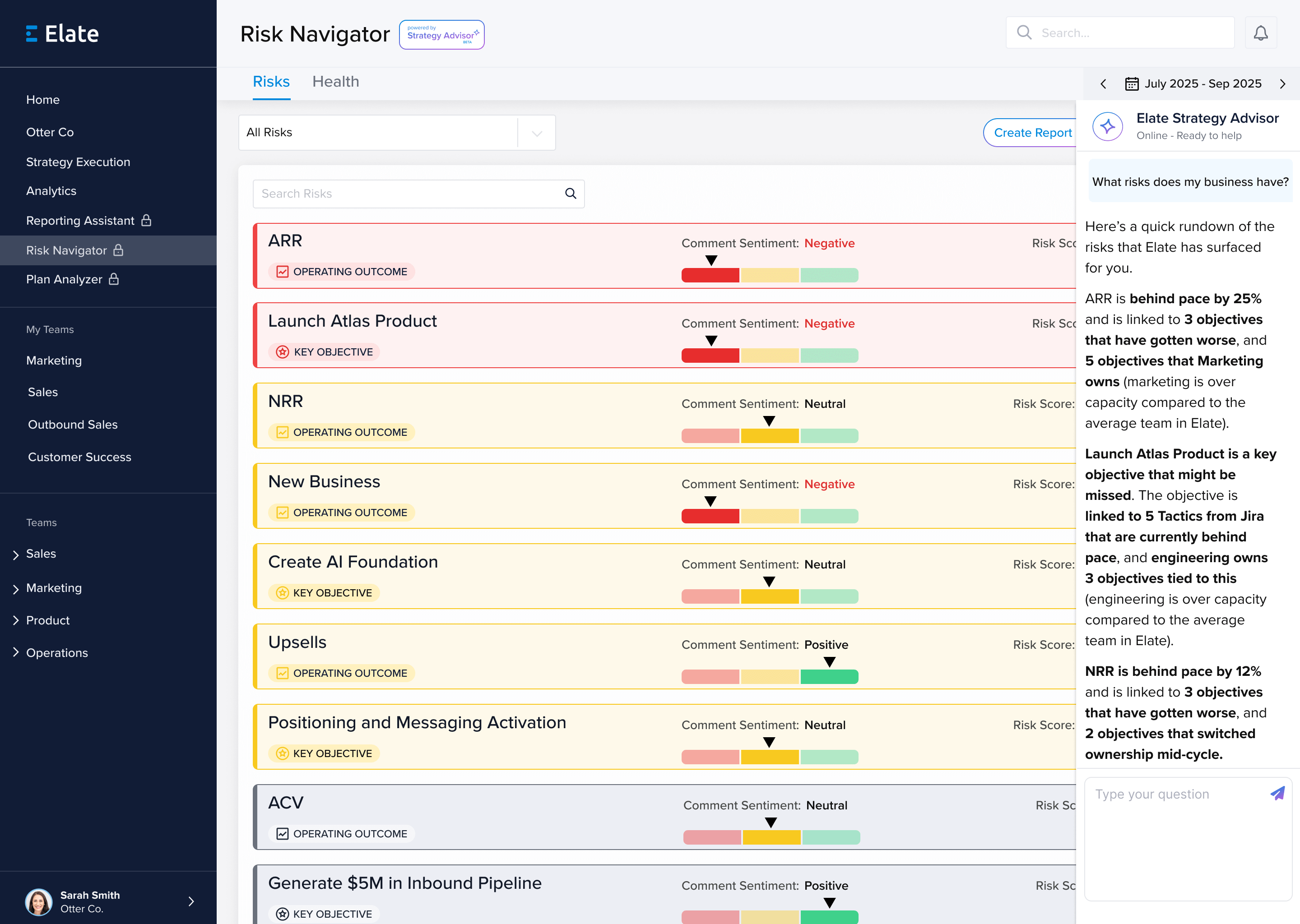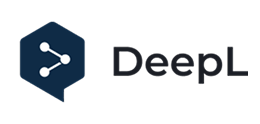In today’s hybrid environment of in-office and remote work, aligning teams around goals and objectives is more critical than ever. For many high growth companies, the drive towards the long term vision has been lost in the disconnected work environment, and many employees are left feeling siloed or isolated from other areas of the business. Now more than ever, companies are being asked to adjust to this new environment and provide a central hub where employees can feel connected to the larger purpose. However, there are some challenges that can come with trying to build a central source of truth for employees. From goals, objectives, topics, and all-hands reporting, it can be really difficult to unify all of the updates and information going on across a business.
Meet Elate.
Elate is the leading strategic planning platform built to help high growth companies communicate their vision, create alignment, and track performance all in one place. It is the operations management system software built for today’s strategy and ops leaders.
With access to a defined operations management system, like Elate, it is possible for companies to take advantage of operations management techniques and create alignment throughout the organization.
From improved productivity, increased accuracy on reporting, and surfacing challenges or obstacles that prevent teams from hitting their goals, Elate provides plenty of examples of application software that companies can use to help bring together day-to-day execution with their long term vision.
In leveraging an operations management software, like Elate, companies can proactively identify areas of opportunity within the business or areas to shift resources away from in order to maximize growth. Elate’s operations management software can also be useful in bringing together objectives that span multiple teams. From sales and marketing to product and software engineering, Elate is able to tie together dependencies across objectives to help your company stay on track. There are even operations management software programs that are used in the healthcare industry, helping hospitals streamline their processes.
So when thinking about the operations management software that’s right for your business, it’s important to first understand what challenges you are looking to solve. Operations software solutions come in many shapes and forms. From free OKR tools that can get your company set up quickly, but quickly be outgrown to enterprise OKR solutions that take 9-12 months to implement, there are a number of different routes you can take. However, let’s start by looking at a few examples of different operations management models.
Operations Management Models
When taking a look at operations management models, it is important to consider operations management tools, models and analytical approaches. With access to the right operations management tools, it’s possible for companies to get the most out of their operations management strategy.
When trying to set up a classic operations management model, there are several steps that can be followed. Below are some of the beginning steps:
- Companies can start by thinking about the questions they are going to answer using the operations model. What are a few common challenges the company is trying to address? What can the company do to overcome these challenges? By answering these questions, companies can first address the challenges they are looking to solve for in their current operating framework.
- Next, it’s important to begin identifying an operating framework that aligns with your company’s long term goals. Whether EOS, OKRs, V2MOM, or another framework is right for you is based on your growth goals. We see that each model has it’s pros and cons, with OKRs being more on the aggressive growth side and EOS being a bit more conservative.
- Finally, no matter what framework you choose, it needs to be tailored to your organization. We’ve seen far too many false starts, failed rollouts, and frameworks that have been sent to the trash, because companies try to follow them to the letter of the law. Your business is complex, dynamic, and ever-changing. While your framework can provide structure, it also needs to evolve with your business needs.
Sometimes, the hardest part of setting up an operations management model is the iteration stage of building a framework. Fortunately, Elate has made this easy for companies.
In Elate, we provide the ability to build an operations management model that is tailored towards your business. Starting with company themes and moving to department objectives, we start by painting the high level goals for your company, and allow those to be viewed by every employee. We then allow those themes and department objectives to be connected with individual objectives throughout the business.
With our easy-to-use interface, building and tracking objectives for your framework has never been easier. And for those that use OKRs, our OKR dashboard and OKR reporting allows for automated updates to be surfaced to you and your leadership team.
Operational Software Examples
As we start to press in on the best operations management system for your business, it might be helpful to take a look at a few operational software examples. When taking a look at examples of operational software, there are a lot of factors to consider. Most importantly, there is no single “best” software program out there. Instead, companies have to take a look at their specific needs. Then, they need to find the software program that is right for them. There are several factors to consider, including:
- First, try to find a software solution that is tailored for your stage of business. For example, operations software requirements may be a bit different in healthcare than they are in the startup or SaaS landscape. This is critical when it comes to the integrations and capabilities within a solution to connect your data with overall company performance.
- Next, it is also important to look at scalability. As the company grows in the future, will the solution be able to keep up? There are a lot of free OKR tools that exist, and let’s be real, they’re free for a reason. More often than not, these are better visualizations of excel or Google Sheets. The purpose of an operations management system is to surface insights and connect every layer of your business. A free tool will often fall short of that in the long run.
- Finally, does the operating system allow you to create a regular rhythm or cadence for how your team is reviewing the critical OKRs, goal-setting framework, or KPIs that are most important to your business? The platform shouldn’t just serve as a check of the box that everyone is updating their objectives. Instead, it should help drive the structure of your business and how you engage with opportunities for growth.
If companies are able to think about these factors when they are looking at operating software examples, they will be able to find the right solutions for their needs.
Operations Management in the Software Industry
For many high growth companies in the software industry, using operations management software isn’t just helpful, it’s imperative. There are plenty of examples where SaaS operations management software is crucial to the overall structure of a company. When taking a look at technology operations or operations management in software industry, it’s critical to look at a few key components of your operations management application examples.
- Alignment at high growth companies is a challenge. On average, six out of 10 employees at a Series B stage company don’t know the overall vision for the company. Align your employees around a common purpose.
- Operations management software can make it easier for members of the same team to stay on the same page. Connect objectives across departments, tag team members, and automate simply, intuitive reporting that can keep everyone on the same page.
- Operations management software can also be used to automate a lot of the tasks that used to be done by hand. Updating metrics, tracking objectives, or even logging topics/action items. All can be automated.
- Finally, run your team meetings effectively. So much time and effort is wasted bouncing around meetings from topics that aren’t meaningful or relevant to leadership teams. Focus your attention on the priorities moving your business forward.
Clearly, it is important for companies to take advantage of operations management software even in the software industry. Using the right solution can unlock new opportunities for growth for your business.
Business Operations Software
As the dynamic of today’s high growth companies continues to evolve, the structure and business operations software leveraged by these companies will become more and more important.
In looking for the business operations software that’s right for your business, it’s also important to lean on a community of users who may be going through similar challenges or made it over the hurdles your business is facing today. Regardless of any operations team roles and responsibilities your members may have, a community of similarly like-minded individuals will help in the continued development of you and your business.
At Elate, we aren’t only committed to delivering the best business operations software for high growth companies, we are also focused on building the leading community of strategy and ops leaders.
From our Aspiring Ops podcast to use cases with some of the leading SaaS companies of today, we want to amplify the voices of those leading strategy and ops leaders.
As an operations management software, Elate is focused on driving accountability for goals and outcomes, automating follow-up and communicating your company’s vision to the whole organization.
If you’d like to learn more about Elate or how we are working with other leading strategy and ops leaders, we’d love to share more. Feel free to reach out to our team today for a demo or call to learn more!











